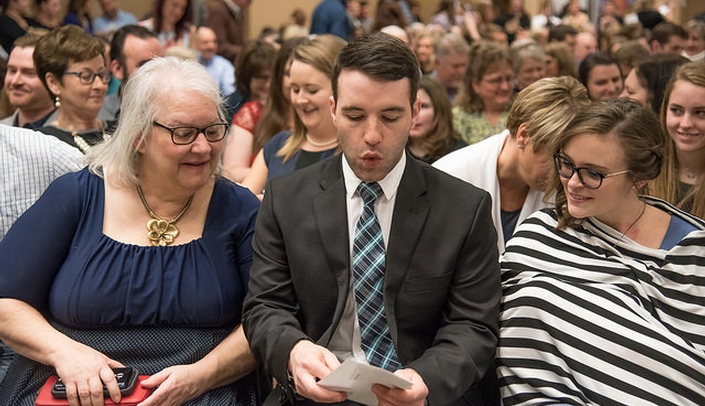As I watched our Match Day ceremony unfold on March 16, it was easy to see what a special day it is for our medical students.
It is truly a landmark event – the atmosphere in the room is just electric. After four challenging years of medical school, the students are so ready to make the transition from medical student to physician.
As always, the UNMC College of Medicine fared extremely well on Match Day with 121 of our students (or about 97 percent) matching. Nationally, 94.3 percent of medical students matched.
There were some interesting trends:
—Internal Medicine and Anesthesiology were the two most popular specialties at UNMC with 22 and 15 students, respectively, choosing to pursue their residency in these disciplines;
–Things change from year to year. Last year, among the most popular choices was psychiatry with 15 choosing that specialty; this year, three students selected psychiatry;
–38 percent of UNMC students are staying in Nebraska for their training, an increase from last year; and
–58 percent matched in primary care, which includes family medicine, internal medicine, internal medicine/pediatrics, pediatrics and obstetrics/gynecology, also an increase from last year.
Nationally, this year’s Match Day was the largest in history, with a record-high 37,103 applicants competing for 33,167 positions, the most ever offered. Obviously, with nearly 4,000 more applicants than residency positions and new medical schools and growing medical school class sizes across the country, this points out a problem that all medical schools are concerned about.
Increasing the number of medical school graduates without a corresponding increase in residency positions will not address the growing problem of a shortage of physicians that is expected to worsen in coming years.
The Association of American Medical Colleges (AAMC) forecasts a shortage of up to 104,900 physicians in the U.S. by 2030 – even though student enrollment in U.S. medical schools already has increased by 30 percent since 2002. To address this shortage, the AAMC has endorsed legislation that would provide a modest increase in the number of federally supported residency positions – a number that was frozen by Congress in 1997.
We certainly agree with the AAMC on the importance of increasing the number of residency slots. It would have a huge benefit for all academic medical centers.
It would be remiss not to take a moment to reflect on the tragic death by suicide of one of our internal medicine residents, Dr. Jarrod Dye, on Feb. 28.
Dr. Dye’s death is a grave loss to his family, friends and colleagues as well as everyone in graduate medical education and the entire UNMC/Nebraska Medicine family.
It also brings very close to home the national statistics related to the several-fold increase in suicide rates among physicians relative to the general population. In fact, there were three other deaths of residents by suicide across the country within a week of Dr. Dye’s death.
House officers (resident physicians) are the backbone of academic health care systems such as ours. As a group, they are among the hardest working people in the nation and have a tremendous impact on everything we do in health care.
The Graduate Medical Education office has been working diligently with campus leadership, the House Officer Association, Dr. Steven Wengel, assistant vice chancellor for campus wellness, and several other entities. These efforts have primarily focused on coping mechanisms, providing support and – most importantly – planning for the future.
There is much more to do. This is merely the start of a long journey. It is our hope that this will become an ongoing debate to help improve the workplace atmosphere for house officers.
We would welcome any input on how we can make this happen. I can assure you that we will keep everyone informed as we move forward on this important endeavor.
